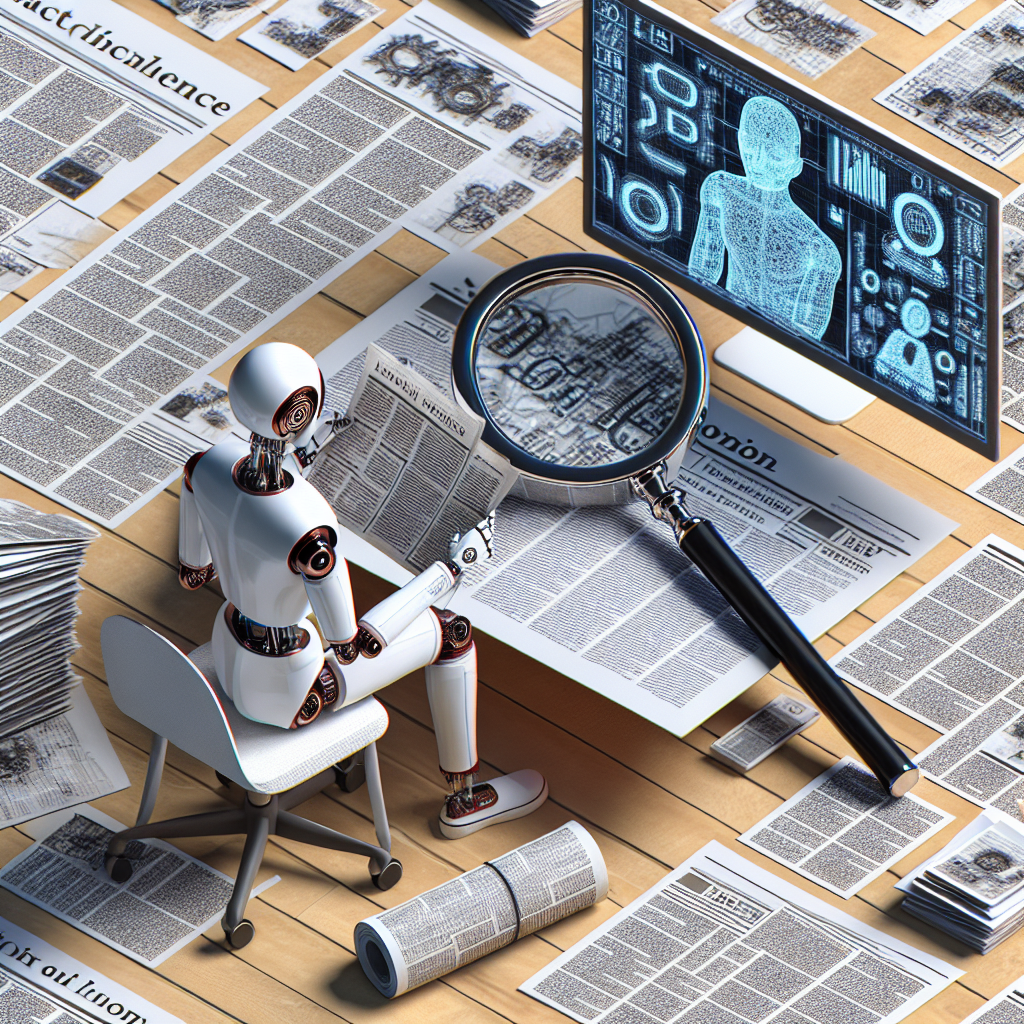AI Journalism: Exploring the Potential for Automated Fact-Checking
In today’s fast-paced digital world, the demand for accurate and reliable news has never been higher. With the rise of social media and online news platforms, the spread of misinformation and fake news has become a significant concern for both journalists and the general public. In response to this challenge, many news organizations are turning to artificial intelligence (AI) technology to automate the process of fact-checking and verification.
AI journalism refers to the use of artificial intelligence and machine learning algorithms to analyze, verify, and report news stories. By harnessing the power of AI, journalists can quickly and efficiently sift through vast amounts of data to identify false or misleading information, helping to ensure that only accurate and reliable news is disseminated to the public.
One of the most promising applications of AI journalism is automated fact-checking. Traditionally, fact-checking has been a time-consuming and labor-intensive process, requiring journalists to manually verify the accuracy of statements made by politicians, public figures, and news sources. With AI technology, fact-checking can be done in a fraction of the time, allowing news organizations to quickly debunk false claims and correct inaccuracies before they spread further.
There are several ways in which AI can be used for automated fact-checking in journalism. Natural language processing (NLP) algorithms can be used to analyze the text of news articles, speeches, and social media posts to identify statements that are potentially false or misleading. By comparing these statements to a database of verified facts and sources, AI can quickly flag inaccuracies and provide journalists with the information they need to correct them.
Another approach to automated fact-checking is the use of AI-powered bots and chatbots to monitor news sources and social media platforms for false information. These bots can quickly identify and debunk fake news stories, viral hoaxes, and misinformation, helping to prevent the spread of false information online.
In addition to fact-checking, AI journalism can also be used to analyze data and trends to identify emerging news stories and topics of interest. By using machine learning algorithms to analyze patterns in social media posts, news articles, and other sources of information, journalists can identify breaking news stories and potential sources for further investigation.
Despite the potential benefits of AI journalism, there are also concerns about the accuracy and reliability of automated fact-checking algorithms. Like any technology, AI is not infallible and can make mistakes. There is also the risk of bias in AI algorithms, as they may be trained on data that reflects the prejudices and assumptions of their creators.
To address these concerns, news organizations that use AI journalism must be transparent about the limitations of the technology and the potential for errors. They must also ensure that human journalists are involved in the fact-checking process to provide oversight and validation of the AI’s findings.
Despite these challenges, the potential for AI journalism to revolutionize the way news is reported and verified is undeniable. By harnessing the power of AI technology, journalists can work more efficiently, quickly debunk false information, and provide the public with accurate and reliable news.
FAQs:
Q: How accurate is AI journalism in fact-checking?
A: The accuracy of AI journalism in fact-checking can vary depending on the quality of the data and algorithms used. While AI technology can quickly analyze vast amounts of information, there is still the risk of errors and bias in the algorithms. It is essential for news organizations to have human journalists involved in the fact-checking process to provide oversight and validation of the AI’s findings.
Q: Can AI journalism replace human journalists?
A: AI journalism is designed to assist human journalists in their work, not replace them. While AI technology can automate certain tasks, such as fact-checking and data analysis, human journalists are still needed to provide context, interpretation, and storytelling. AI journalism should be seen as a tool to enhance the work of human journalists, not replace them.
Q: What are the ethical implications of AI journalism?
A: There are several ethical implications of AI journalism, including concerns about bias, privacy, and transparency. News organizations must be transparent about the use of AI technology in their reporting and ensure that it is used responsibly and ethically. There is also the risk of AI algorithms perpetuating biases and prejudices, so it is essential to monitor and address these issues to ensure fair and accurate reporting.
Q: How can AI journalism help combat fake news?
A: AI journalism can help combat fake news by quickly identifying and debunking false information before it spreads further. By using AI technology to automate fact-checking and verification processes, news organizations can effectively combat misinformation and provide the public with accurate and reliable news sources.
In conclusion, AI journalism has the potential to revolutionize the way news is reported and verified. By harnessing the power of AI technology, journalists can work more efficiently, quickly debunk false information, and provide the public with accurate and reliable news. While there are challenges and concerns about the use of AI in journalism, the benefits of automated fact-checking and data analysis are undeniable. As AI technology continues to advance, it will be exciting to see how it is used to enhance the quality and credibility of news reporting in the future.

